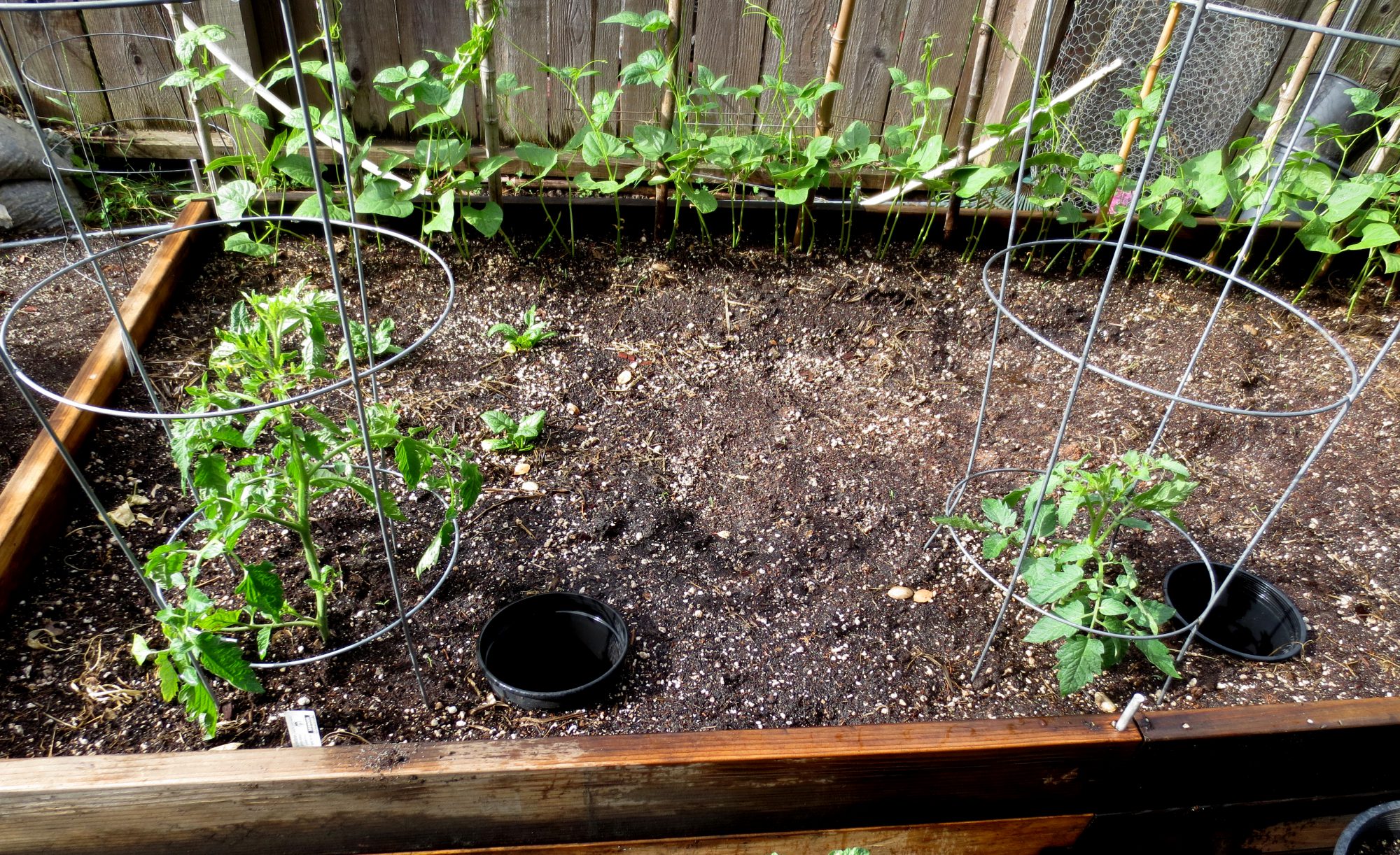Watering your Tomatoes
Have you ever had tomatoes that were watery, mealy and bland flavored? Watering your tomatoes correctly can make the all the difference in the flavor and texture of your harvest. Additionally, many leaf diseases on tomatoes are spread by water splashing soil onto the leaves.
We find the following method helps get the water deep down in the soil and encourages roots to go down where they are less vulnerable to daily fluctuations in moisture and temperature.
- When you plant your tomato, ‘plant’ a 1 gallon plastic pot about 1 foot away. Leave it empty and keep the rim about 1” above the soil level. Mulch around the plant.
- When you water, fill the pot and let the water drain slowly into the soil. Repeat. This allows the soil to be deeply watered without soil splashing onto the leaves.
- When the fruits start to ripen, back off on the watering some, they won’t split as easily and the flavor will be intensified.
Thank you to our friends at Kassenhoff Growers for sharing these important growing tips.
Don’t let Blossom End Rot Ruin your Summer
Apropos to this month’s cover article, I’d like to share an all-too-common nutrient problem that can plague Bay Area tomato growers. As the plants grow, in order for the newly forming fruits to develop properly, there must be an ample supply of Calcium available to either roots or leaves.
A lack of adequate Calcium causes the cell membranes to not function properly (remember BioSci 103?). The integrity of the cell wall is compromised, and plant extremities such as shoot or root tips become susceptible to secondary disease organisms. In short, if you’ve had problems with tomatoes rotting on the vine, a liberal dose of calcium-containing fertilizer is likely to set things right. Just read the fine print on your fertilizer package.
Also, consider natural sources such as composted eggshells, bone meal, lime, or oak leaf mold. And finally, an excellent topical treatment available in our store is Bonide Tomato & Blossom Spray, which can be applied directly to the leaves of your tomato plants.


